Complete Guide to Big Hole National Battlefield in Montana, including things to do, history, nearby lodging and camping, directions, and so much more.
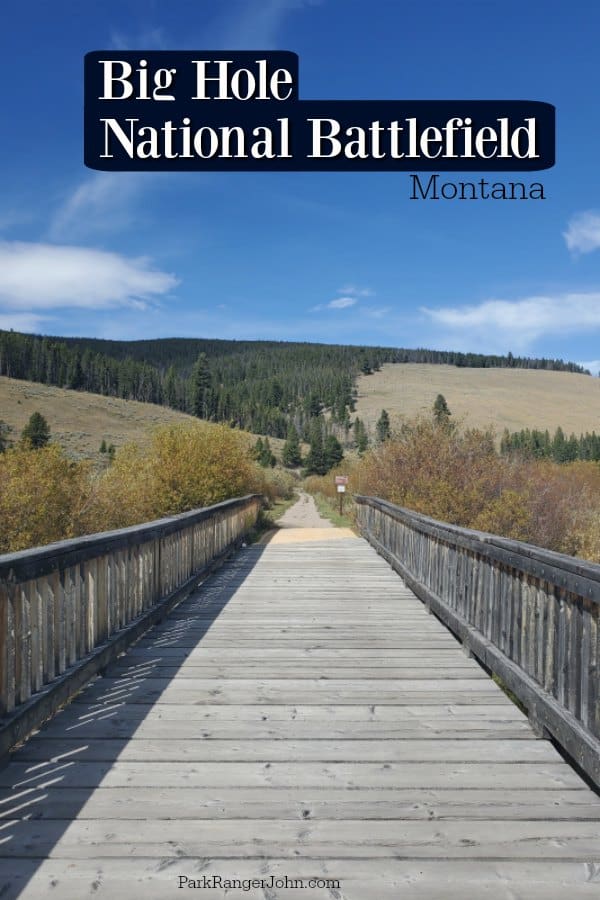
Big Hole National Battlefield
Big Hole National Battlefield is one of the 38 sites that are part of Nez Perce National Historical Park.
Big Hole National Battlefield was established as a military preserve in 1883. President Taft created the Big Hole Battlefield National Monument on June 23, 1910. The park's name was changed to Big Hole National Battlefield on May 17, 1963.
This National Battlefield preserves the site of the pivotal battle in the Nez Perce War of 1877 between Colonel John Gibbon's troops and five bands of the Nez Perce Indians, led by the famous Native American leader, Chief Joseph.
On the morning of August 9th, about 750 non-treaty Nez Perce Indians were attacked by the Seventh U. S. Infantry and civilian volunteers who had been ordered to place the Nez Perce on a small Idaho reservation.
About Big Hole National Battlefield
In early August 1877 a large group of nimí·pu, Nez Perce Native Americans, made camp in the Bitterroot Valley after passing over LoLo Pass in Montana.
They had been fleeing the military for a while and felt like they were finally safe. Unfortunately, on the morning of August 9, 1877, the US Military surprised the sleeping men, women, and children by attacking them.
Between 60 to 90 nimí·pu were killed during the historic battle. After the battle, the remaining tribal members fled south, crossing into Idaho and heading towards Yellowstone National Park.
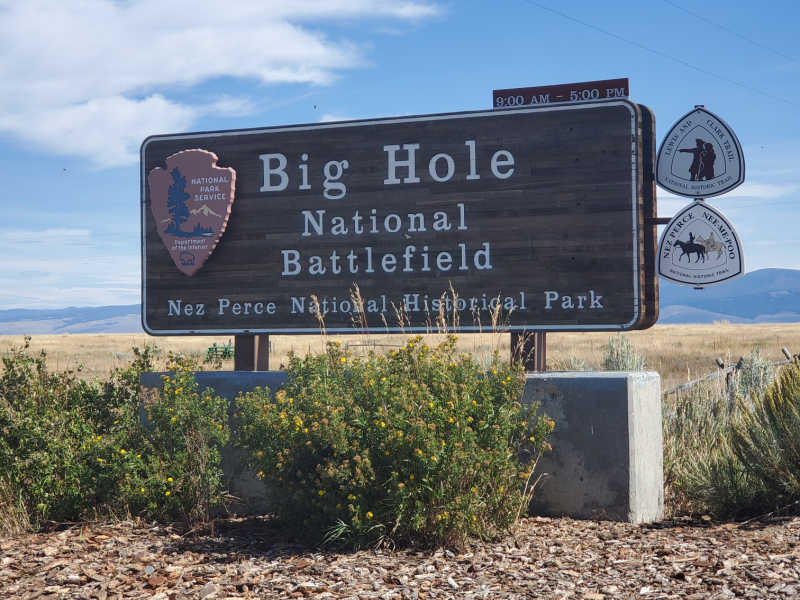
Is Big Hole National Battlefield worth visiting?
Yes, The park tells a painful part of US History that we all should know more about. The park movie is a must watch. It tells the history of the park really well.
History of Big Hole National Battlefield
Big Hole National Battlefield is located in Beaverhead County, Montana and encompasses 1,010 acres.
It is off Montana Hwy 43 and is about 10 miles west of the city of Wisdom in the far western section of the state. The site was designated as a National Battlefield in May of 1963.
The story of the battle at Big Hole actually begins west of Montana, where the homeland of the Nez Perce tribe included portions of northeast Oregon, southeast Washing and northern Idaho.
The Nez Perce were one of the most historically significant Native American groups; it was this tribe that Lewis and Clark met near the end of their famous expedition.
It was the Nez Perce who supplied Lewis and Clark’s groups, the Corps of Discovery, with horses. They supplied them with guides to help them navigate the rivers and shared their centuries-old knowledge of canoe building.
Emerging from the Bitterroot Mountains in Idaho after more than a week of hiking in freezing conditions, the starving, frostbitten Corps would not have survived without the bison meat and salmon the Nez Perce shared with them upon meeting.
The Nez Perce may or may not have realized what lie ahead in their future after the 1805 Lewis and Clark Expedition entered their native homeland.
By the mid-1840s, settlers and missionaries were already moving through the lands of the Wallowa Valley, centrally located in the Nez Perce homeland. Settlers were moving west on the Oregon Trail and states were being created.
The U.S. government was beginning their creation of treaties pushing Native Americans off their lands all over the country.
In 1885, a treaty ensured the Nez Perce that they were guaranteed their precious Wallowa Valley as well as portions of Idaho and Washington.
That all changed in 1860 when gold was discovered in the territory. The U.S. decided it would be best to reduce the land the Nez Perce would have access to, taking away nearly six million acres.
While many chiefs conceded to the government and agreed to sign the treaty and convene on a reservation, others, such as Old Chief Joseph and his son Heinmot Tookyalakekt, known as Chief Joseph, decided they were not being forced out of the Wallowa Valley.
Old Chief Joseph, originally named Tu-eka-kas, converted to Christianity in 1839 and was baptized as Joseph. His son was born in the Wallowa Valley in 1840. Old Chief Joseph remained in the Wallowa Valley until his death in 1871 and was buried in his homeland.
By 1877, the U.S. government had failed numerous negotiations with the Nez Perce to leave the Valley. In May of that year the government issued a warning and gave the tribal group 30 days to move onto a reservation located in Idaho.
Warriors of the Nez Perce tribe were so enraged, they raided nearby settlements, killing a number of white settlers. Chief Joseph was a peaceful, loving Chief who wanted to stay in the place of his father’s grave, but knew he had to flee to protect his people.
His thoughts were to escape to Canada. Sitting Bull, chief of the Lakota tribe, had sought refuge here less than a year earlier and Chief Joseph believed his people would be treated differently there.
The Nez Perce went on the run with nearly 750 people, only 200 of which were warriors. They were pursued by the much larger U.S. Army under the direction of General Oliver Howard.
As battles took place along the way, the five month chase became known as the Nez Perce War of 1877. The first battle took place at White Bird Canyon in Idaho territory in June.
Following this battle, the Nez Perce fled towards the Montana border. Chief Joseph was unaware that by July, the U.S. 7th Infantry had left from nearby Fort Shaw to assist the Army.
It was in August, six weeks after leaving their homeland, that the natives entered what is now Beaverhead County Montana.
The 7th Infantry U.S. Cavalry ambushed the sleeping Nez Perce at Big Hole early on the morning of August 9th, 1877. The startled camp of tribal members scattered as not just Nez Perce warriors, but Nez Perce men, women, and children were killed while running through the valley.
A battle ensued for nearly a day and a half and in the end, both sides sustained heavy loses.
It is estimated that 80-90 Nez Perce members lost their lives and likely around 30 American soldiers. It was the largest battle in the Nez Perce War of 1877.
After the retreat of the U.S. Army, Chief Joseph led his people north toward the Canadian border. Another battle ensued at the base of the Bear Paw Mountains which led to nearly a week-long siege.
This is the place where Chief Joseph surrendered to the U.S. Army. His famous quote at this location has echoed through the centuries: “Hear me, my chiefs. I am tired. My heart is sick and sad. From where the sun now stands, I will fight no more forever.”
Today the somber yet beautiful Big Hole Valley is surrounded by peaks, as three different mountain ranges are visible from the spot.
Visitors here may wonder if nearly 150 years earlier Chief Joseph chose this spot as camp because it reminded him of the peaceful beauty of his beloved Wallowa Valley. The battlefield serves as a memory for all who died; plaques display some of the names of the brave warriors in Chief Joseph’s band.
After his surrender, Chief Joseph and his people were moved to reservations in Kanas and eventually Washington.
A leader all his life, he traveled to New York City, Seattle, and Washington D.C. on more than one occasion, to speak about the years of injustices to Native Americans.
Chief Joseph died in 1904, according to his doctor, of a broken heart, still yearning to return to his ancestral Wallowa Valley.
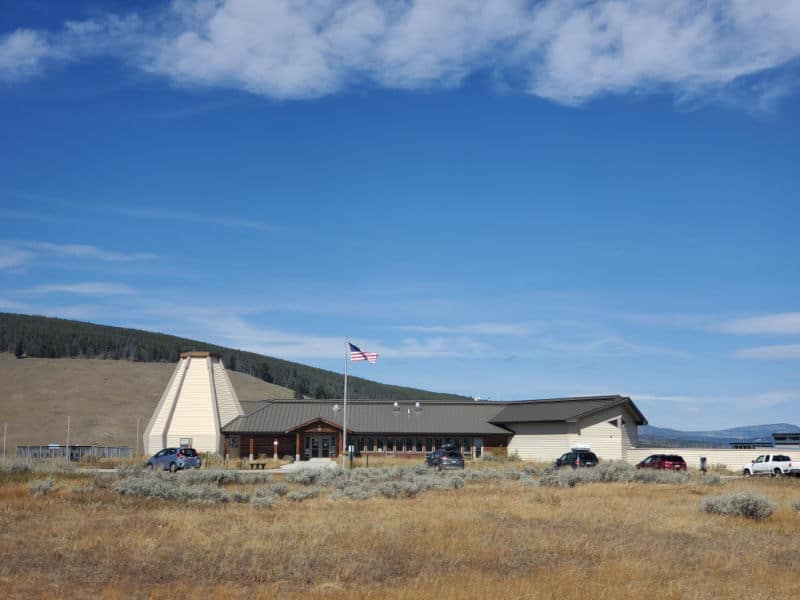
Things to know before your visit to Big Hole National Battlefield
Entrance fee
$0.00 - There is no entrance fee to visit the park.
Learn more about National Park Passes for parks that have an entrance fee.
$80.00 - For the America the Beautiful/National Park Pass. The pass covers entrance fees to all US National Park Sites and over 2,000 Federal Recreation Fee Sites for an entire year and covers everyone in the car for per-vehicle sites and up to 4 adults for per-person sites.

Buy your pass at this link, and REI will donate 10% of pass proceeds to the National Forest Foundation, National Park Foundation, and the U.S. Endowment for Forestry & Communities.
National Park Free Entrance Days -Mark your calendars with the five free entrance days the National Park Service offers annually.
Time Zone
Mountain time zone
Pets
Leashed pets are allowed on paved roads, but only service animals are allowed in the Big Hole Visitor Center or on the trails at either battlefield.
Cell Service
Cellular service is limited to nonexistent at the park.
Park Hours
The park is open daily from 10 AM to 4:30 PM except during the winter season when it is closed on Sunday and Mondays.
Wi-Fi
There is no public Wi-Fi available at the park.
Insect Repellent
Insect repellent is always a great idea when outdoors, especially if you are around any body of water.
We use Permethrin Spray on our clothes before our park trips.
Water Bottle
Make sure to bring your own water bottle and plenty of water with you. Plastic water bottles are not sold in the park.
Parking
There is parking available at the visitor center and at the trailhead.
Food/Restaurants
There are no restaurants within the park. The nearest restaurant is Fetty’s, it is 12 minutes drive from the park.
Gas
There are no gas stations within the park.
Drones
Drones are not permitted within National Park Sites.
National Park Passport Stamps
National Park Passport stamps can be found in the visitor center.
Big Hole National Battlefield is part of the 1992 Passport Stamp Set
We like to use these circle stickers for park stamps so we don't have to bring our passport book with us on every trip.
The National Park Passport Book program is a great way to document all of the parks you have visitied.
You can get Passport Stickers and Annual Stamp Sets to help enhance your Passport Book.
Electric Vehicle Charging
There are two electric vehicle charging stations within a 30-mile radius of Wisdom, MT.
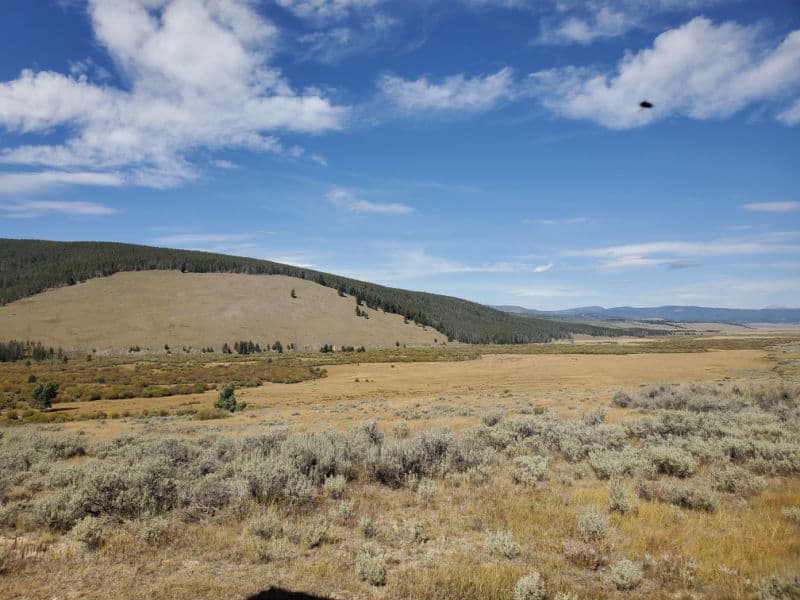
Details about Big Hole National Battlefield
Size - 655 acres
Check out how the park compares to other National Parks by Size.
Date Established
The site was established as a Military Preserve in 1883, and designated a National Monument on June 23, 1910. It was redesignated a National Battlefield on May 17, 1963.
Visitation
In 2021, Big Hole National Battlefield had 31,734 park visitors.
In 2020, Big Hole National Battlefield had 36,234 park visitors.
In 2019, Big Hole National Battlefield had 45,861 park visitors.
Learn more about the most visited and least visited National Parks in the US
National Park Address
16425 Highway 43 West, Wisdom, Montana 59761
United States
Latitude/Longitude: 45°38'27.64"N / 113°38'35.88"W
Park phone number - (406) 689-3155
National Park Map
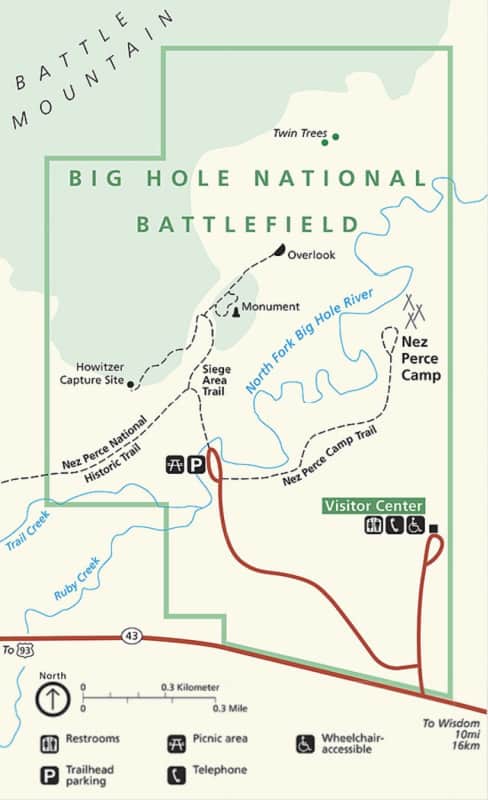
Where is Big Hole National Battlefield?
Big Hole National Battlefield is located on Highway 43 ten miles west of the town of Wisdom in southwest Montana.
Bear Paw Battlefield is located on Route 240 sixteen miles south of the town of Chinook in north-central Montana.
Estimated distance from major cities nearby
- Boise, ID - 400 miles
- Salt Lake City, UT - 420 miles
- Seattle, WA - 585 miles
- Portland, OR - 650 miles
- Reno, NV - 770 miles
Estimated Distance from nearby National Park
Yellowstone National Park - 250 miles
Grand Teton National Park - 300 miles
Glacier National Park - 355 miles
Theodore Roosevelt National Park - 600 miles
Badlands National Park - 680 miles
Where is the National Park Visitor Center?
The visitor center for Big Hole National Battlefield is located in Wisdom, Montana.
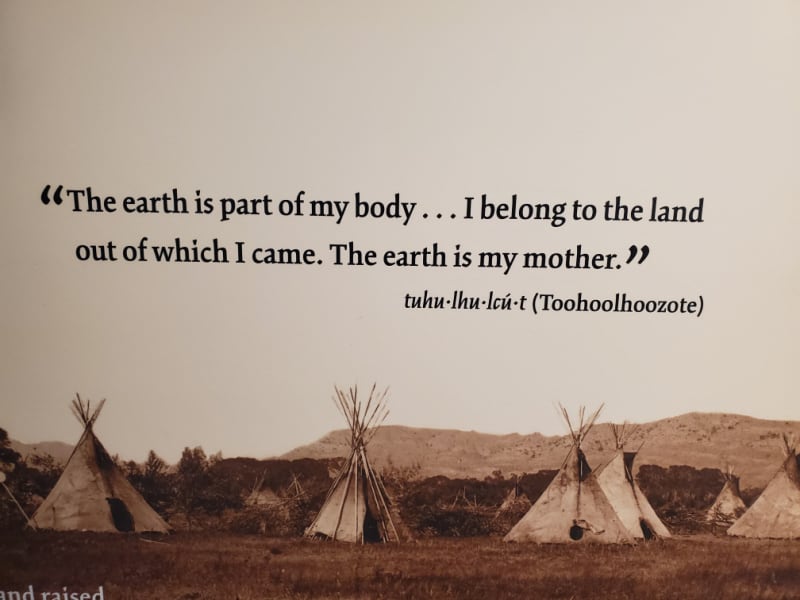
Getting to Big Hole National Battlefield
Closest Airports
- Bert Mooney Airport (BTM)
International Airports
- Missoula International Airport (MSO)
- Bozeman Yellowstone International Airport (BZN)
Regional Airports
Helena Regional Airport (HLN)
Driving Directions
From I-15 at Dillon, MT. Take Highway 278 sixty-five miles northwest to Wisdom, MT. Turn west on MT Highway 43 and drive ten miles west to the battlefield.
From I-15 at Divide, MT. Take Highway 43 sixty-two miles west through Wisdom, MT to the battlefield.
From I-90 at Missoula, MT. Take US 93 ninety-eight miles south through the Bitterroot Valley to Lost Trail Pass. Turn east on Highway 43 and drive 17 miles east to the battlefield.
From Salmon, ID. Take US 93 forty-six miles north to Lost Trail Pass. Turn east on Highway 43 and drive 17 miles east to the battlefield.
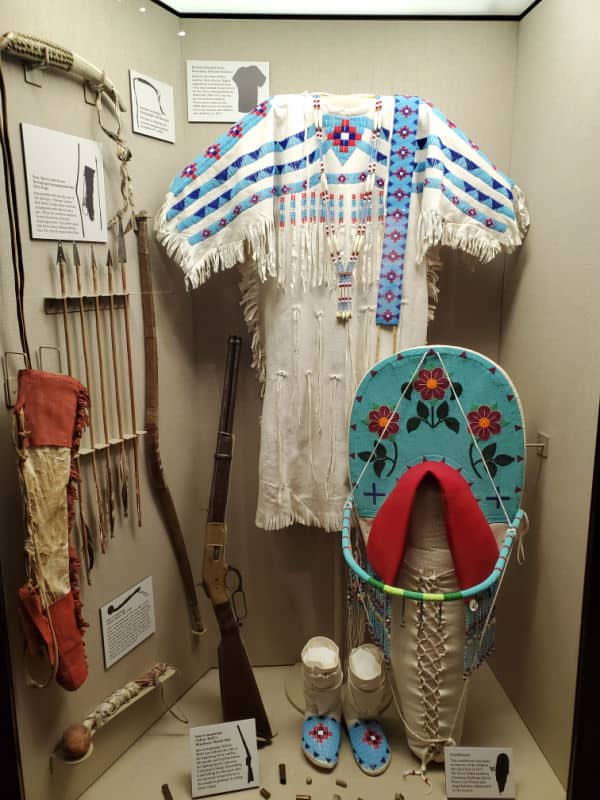
Best time to visit Big Hole National Battlefield
The summer months, specifically June through September, are the best time to visit Big Hole National Battlefield since the weather is warmer and more favorable for outdoor activities, making it a great time for hiking, picnicking, and other activities in the park. The temperature is also less likely to be as harsh as winter.
Weather and Seasons
The warmest month is July, with an average high temperature of 77.2 degrees and an average low temperature of 45.1 degrees.
The coldest month is December, with an average high temperature of 24.1 degrees and an average low-temperature of 9.5 degrees.
The month with the most snowfall is February, when snow falls for 18.8 days and typically aggregates up to 14.8 inches of snow.
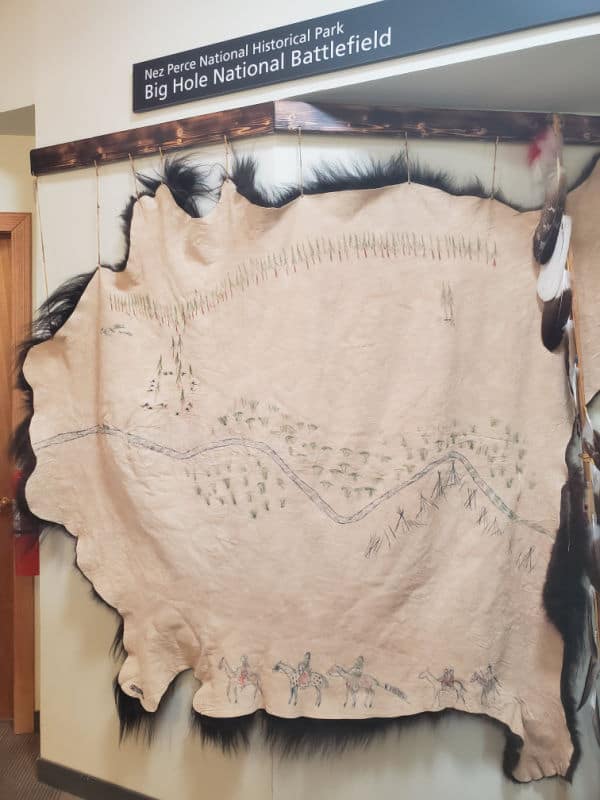
Best Things to do in Big Hole National Battlefield
We suggest planning at least a few hours to visit the park and explore the trails. The park video is fantastic and a must watch.
Please remember during your visit that this is sacred ground.
Visitor Center
The visitor center is a great place to start your visit. The park movie Weet'uciklitukt: There's No Turning Back, Battle at Big Hole shares what happened on August 9 and 10, 1877.
The visitor center has a small museum area and a great view over the battlefield. There is great information on the the Battle of Big Hole, the 1,300-mile flight of the Nez Perce people, and U.S. Government forces military practices of the late 19th century.
Junior Ranger Program
The Junior Ranger program is a great opportunity for visitors of all ages to learn more about the park.
Ranger Led Deck Talk
11 am and 1:30 pm on Saturdays and Sundays. 11 am, 1:30 pm, and 3 pm on weekdays if staffing allows.
Enjoy a deck talk with a Park Ranger with a great view of the battlefield from the visitor center, you can learn more about the battle and events that happened here
Annual Commemoration of the Battle of the Big Hole
Location: Nez Perce Camp on the battlefield
Events include a pipe ceremony and drum circle (NO PHOTOS)
Everyone is invited to attend and there is no admission fee. For your own comfort, bring a chair or blanket, hat, sunscreen, lunch, umbrella, and mosquito repellent.
Annual Commemoration of the Battle of Bear Paw
Location - Bear Paw Battlefield, Chinook MT
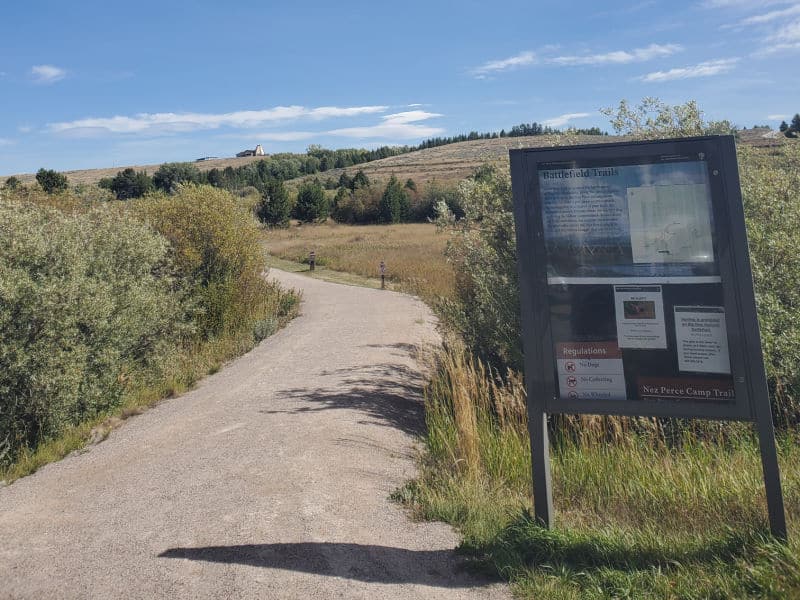
Hiking in Big Hole National Battlefield
Always carry the 10 essentials for outdoor survival when exploring.
There are three hiking trails in the park that are open year-round. During the summer and fall trail guides are available at the trailheads for $1.00, during the winter ask for them at the visitor center.
Hiking trails are no accessible from the visitor center. To reach the trails you need to drive to the lower parking area.
Nez Perce Camp Trail - 1.6 miles round-trip walking trail with no elevation gain
Siege Area Trail - 1.2 miles round-trip and climbs about fifty feet in elevation
The Howitzer Trail - 0.8-mile spur trail off of the Siege Area trail that climbs 320 feet in elevation
As you walk around the battlefield, please be respectful to those who died here. Refrain from taking your pets on the trails.
Ranger Guided Hike
Late June through late September on Saturdays and Sundays Ranger lead hikes from 1.2 to 2 miles round trip starting at 10 am and lasting 90 minutes. These battlefield hikes take you back in history and detail what happened in August 1877.
Don't forget to pack
Insect repellent is always a great idea outdoors, especially around any body of water.
We use Permethrin Spray on our clothes before our park trips. Please read my article on preventing biting insects while enjoying the outdoors.
Sunscreen - I buy environmentally friendly sunscreen whenever possible because you inevitably pull it out at the beach.
Bring your water bottle and plenty of water with you. Plastic water bottles are not sold in the park.
Sunglasses - I always bring sunglasses with me. I personally love Goodr sunglasses because they are lightweight, durable, and have awesome National Park Designs from several National Parks like Joshua Tree, Yellowstone, Hawaii Volcanoes, Acadia, Denali, and more!
Click here to get your National Parks Edition of Goodr Sunglasses!
Binoculars/Spotting Scope - These will help spot birds and wildlife and make them easier to identify. We tend to see waterfowl in the distance, and they are always just a bit too far to identify them without binoculars.
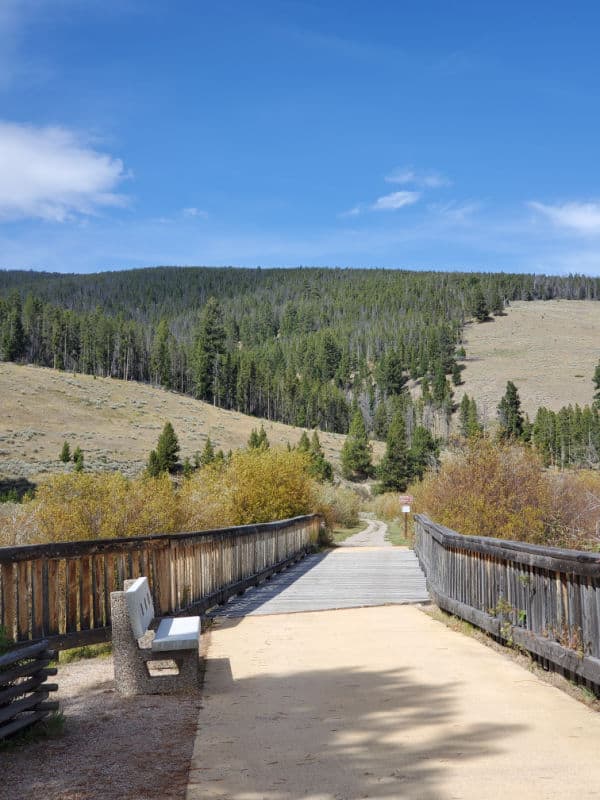
How to beat the crowds in Big Hole National Battlefield?
We have not experienced any crowds during our visits to the park.
Where to stay when visiting Big Hole National Battlefield
There are no National Park Lodges within the park.
Nearby lodging includes:
Stagecoach Inn is located in Salmon, Idaho - free breakfast buffet, a roundtrip airport shuttle, and a terrace. Stay connected with free in-room Wi-Fi, and guests can find other amenities such as laundry facilities and a 24-hour business center.
Super 8 by Wyndham Salmon - free breakfast buffet, a fireplace in the lobby, and a 24-hour business center at Super 8 by Wyndham Salmon. Stay connected with free in-room Wi-Fi.
Bitterroot River Inn & Conference Center - A terrace, laundry facilities, and a fireplace in the lobby are just a few of the amenities provided at Bitterroot River Inn & Conference Center. For some rest and relaxation, visit the sauna or the hot tub. Stay connected with free in-room Wi-Fi, and guests can find other amenities such as a gym and a 24-hour business center.
Quality Inn Hamilton Bitterroot Valley - free breakfast buffet, a casino, and a grocery/convenience store are just a few of the amenities provided at Quality Inn Hamilton Bitterroot Valley. For some rest and relaxation, visit the sauna. In addition to dry cleaning/laundry services and a gym, guests can connect to free Wi-Fi in public areas.
Click on the map below to see additional vacation rentals and lodging options near the park.
Camping
There are no National Park Campgrounds within the park.

For a fun adventure check out Escape Campervans. These campervans have built in beds, kitchen area with refrigerators, and more. You can have them fully set up with kitchen supplies, bedding, and other fun extras. They are painted with epic designs you can't miss!
Escape Campervans has offices in Vancouver, Seattle, Portland, San Francisco, Las Vegas, Los Angeles, Phoenix, Salt Lake City, Denver, New York, and Orlando
Travel Tips
Big Hole National Battlefield is located at about 6,300 feet above sea level! Be prepared to slow down when visiting the park if you are not used to this elevation.
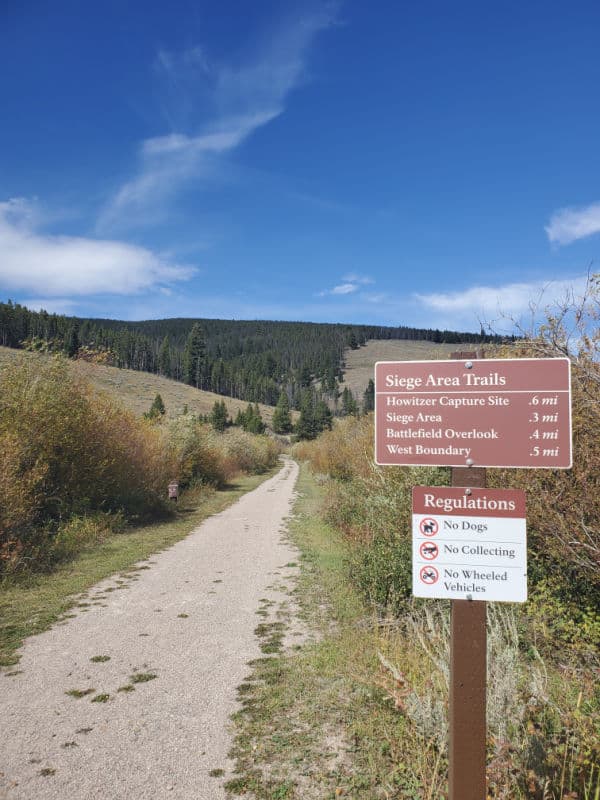
Parks Near Big Hole National Battlefield
Nez Perce National Historical Park - 298 miles
Grant-Kohrs National Historic Site - 85 miles
Little Big Horn National Battlefield - 370 miles
Craters of the Moon National Monument - 280 miles
Hagerman Fossil Beds National Monument - 331 miles
City of Rocks National Reserve - 366 miles
John D Rockefeller Jr Memorial Parkway - 327 miles
Check out all of the Montana National Parks along with neighboring National Parks in Wyoming, National Parks in South Dakota, North Dakota National Parks, and Idaho National Parks
Make sure to follow Park Ranger John on Facebook, Instagram, Pinterest, and TikTok





Leave a Reply